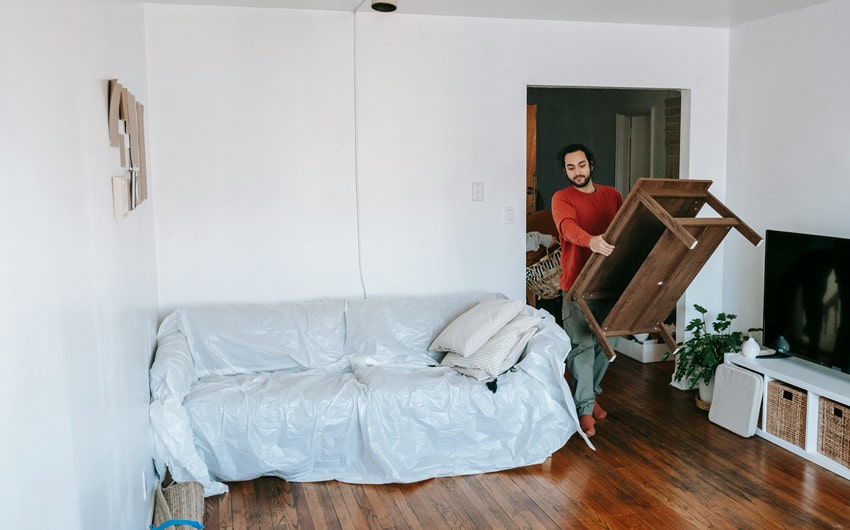How Changing My Surroundings Changed My Mind and My Life
I didn’t expect that moving a few things around—or walking away from familiar places—could do so much for my headspace. But over time, I realized how much my environment was shaping the way I felt, thought, and even dreamed.
What started as small changes turned into a complete mental shift. Looking back, it’s clear how changing my surroundings changed my mind, even in ways I couldn’t see at first. Sometimes, a new view outside your window brings a new perspective inside your mind.
The Before: Feeling Stuck

There was a time when every day felt like a copy of the one before. I’d wake up already tired, go through routines that felt dull, and end the day wondering where the hours had gone. I wasn’t in a crisis, but I was quietly stuck—mentally, emotionally, even physically. My surroundings mirrored that feeling.
The space I lived in felt cluttered, dim, and uninspiring. The people I saw, the conversations I had, even the routes I walked—all of it was so familiar, it started to feel invisible. And over time, without even realizing it, I began to internalize that sameness. My thinking got narrower. I hesitated more. I stopped dreaming big.
My creativity dried up, and motivation became something I had to force. I didn’t realize how much the environment around me was shaping the one inside me. It’s strange how easy it is to normalize feeling disconnected when you’re surrounded by things that no longer reflect who you are—or who you want to be.
The Shift: Making the Change
The turning point wasn’t dramatic, but it was honest. One quiet afternoon, I sat in my room and thought, “I can’t do this like this anymore.” I didn’t know exactly what needed to change, but I had this urge to move—mentally, emotionally, physically.
So I started small. I rearranged my furniture. I added light to dark corners. I decluttered surfaces that had been piled up for months. Those shifts gave me energy I hadn’t felt in a while. It made me curious: What else could change?
From there, I began expanding my environment beyond just the physical space. I explored new cafés and neighborhoods. I started saying yes to things I’d usually avoid—walks with new people, events I wasn’t sure I belonged at, even solo trips. I adjusted my daily routine and spent more time outdoors.
Every small decision to step into something different pulled me out of the fog I’d been living in. Change wasn’t always comfortable—it brought uncertainty and awkwardness too—but it woke me up. It gave me fresh input, new energy, and, slowly, a new way of thinking. The more I shifted my surroundings, the more my mind responded with possibility.
The After: A New Mental Landscape

What surprised me the most was how quietly things began to shift inside me. I didn’t have some huge breakthrough moment—it was more like a gradual lifting of a fog I hadn’t realized I was in. With every change I made to my surroundings, I started to notice new energy in my thoughts.
I felt more curious, more open, more willing to try. My inner dialogue softened. Instead of spiraling through the same worries or doubts, I started asking better questions: What excites me? What else is possible?
Even my creativity, which had felt blocked for so long, started to flow again. Ideas would come more easily. I’d feel inspired in the middle of a walk or just sitting in a new space that felt good to be in. I found myself wanting to journal again, to learn new things, to connect with people in deeper ways.
I felt alive—not in a dramatic, movie-scene kind of way, but in a quiet, steady way that felt deeply grounding. The shift in my mind wasn’t just about thinking happier thoughts. It was about seeing differently, feeling more present, and reconnecting to parts of myself that had been buried under too much noise and sameness.
Looking back, it’s clear: changing my surroundings wasn’t just about moving furniture or switching locations—it was about making space for a new version of myself to emerge.
Why It Worked: The Power of Environment
It’s easy to underestimate just how much our environment shapes us. We like to think we’re totally in charge of our mindset and mood, but the truth is, where we spend our time—and what surrounds us—has a quiet, constant influence.
The colors, the light, the sounds, the people, the routines—all of it sends signals to our brain. When our environment is stagnant, our thinking can become stagnant too. But when it shifts, even in small ways, it can spark something new.
For me, it worked because I started giving my mind new input. I interrupted the mental loops I’d been stuck in simply by changing the context in which they were playing out. A new environment gave me different cues: more light, more openness, more possibilities.
It made me feel safe to explore new thoughts. It also helped me break free from associations I didn’t even know I had—like how certain spaces made me feel small, stuck, or uninspired. By stepping into new spaces, I gave myself permission to feel different too.
The power of environment isn’t just aesthetic—it’s psychological. It can either reinforce who you’ve been or support who you’re becoming. I hadn’t realized how much I needed a reset until I gave myself one, starting with the world around me.
Tips for Others Considering a Change

You don’t need a cross-country move or a complete lifestyle overhaul to shift your mindset. Sometimes the smallest environmental changes can lead to the biggest internal shifts. Here are a few ways to start reworking your surroundings—no matter where you are in life.
1. Start Small and Start Where You Are
Change doesn’t have to be dramatic to be effective. Begin by making simple adjustments to your current space:
-
Rearrange a room to change how you move through it.
-
Declutter areas that feel overwhelming or chaotic.
-
Add items that inspire calm or creativity, like a plant, candle, or meaningful photo.
Even one small shift can refresh your energy and break the pattern of “stuckness.”
2. Pay Attention to How Spaces Make You Feel
Not every space affects us the same way. Some environments drain us without us even realizing it. Start noticing how different places impact your mood, focus, and creativity.
-
Does a certain room make you anxious or tired?
-
Is there a café, park, or library that makes you feel more alert or inspired?
Use that information to seek out or recreate more energizing, calming, or uplifting environments in your daily life.
3. Explore New Places—Even in Familiar Areas
You don’t need to travel far to experience the mental boost of new surroundings. Try:
-
Walking a different route than usual
-
Visiting a new part of your city or town
-
Working from a different spot than you normally do
The brain responds well to novelty. Changing your scenery, even briefly, can bring in fresh perspective and spark new ideas.
4. Let Go of What No Longer Reflects You
Sometimes we hold on to things—objects, spaces, routines—out of habit, even when they no longer align with who we are. Give yourself permission to let go.
-
Clear out items tied to old versions of yourself
-
Shift routines that no longer serve you
-
Reconsider relationships or commitments that feel draining
Creating room in your life (and in your space) allows something new to enter.
5. Design Your Space With Intention
Your environment should support the way you want to feel and live. Think of your space as a tool for well-being, not just a backdrop.
-
If you want more calm: add softness, simplicity, and natural light.
-
If you want more energy: bring in bold colors, open space, or music.
-
If you want more focus: create clear zones for work, rest, and play.
Even small intentional changes can act as daily reminders of the life you’re working toward.
6. Embrace Experimentation
There’s no perfect formula for what “works.” Allow yourself to try things out, observe, and adjust as you go.
-
Maybe a new routine works for a week, then needs tweaking.
-
Maybe a space that once energized you now needs refreshing.
Give yourself the freedom to evolve. The goal isn’t perfection—it’s alignment.






